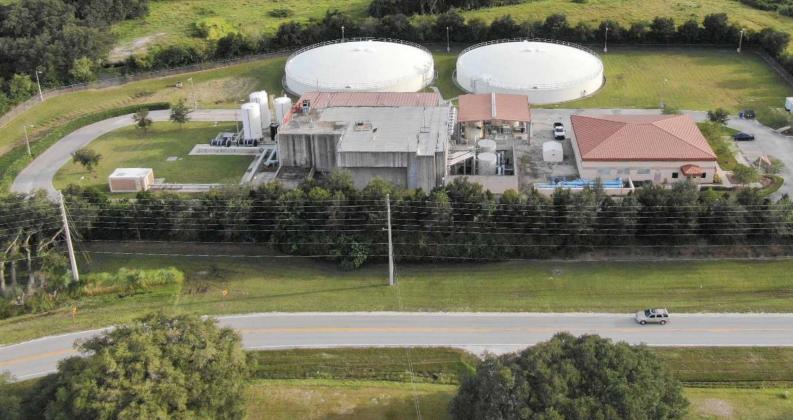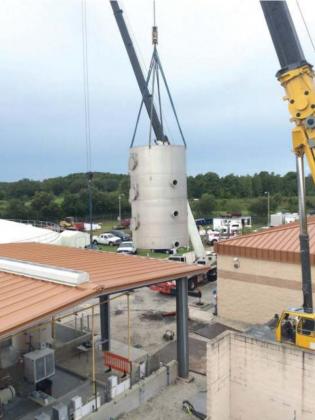St. Cloud city officials have launched a new website to hopefully clear the air about its water situation.
The St. Cloud Water Matters website (https://our communitywater.com) went live Oct. 6 and includes a number of different educational information including: what exactly happened; a timeline of events; steps the city has taken so far to rectify the problems; a question and answer page and more.
“We are accountable and we want to be held accountable,” City Manager Bill Sturgeon said.
The problem started in 2017, when residents started getting discolored water out of their taps.
But Sturgeon said city crews have been tirelessly working to rectify the problem and it just wasn’t an overnight fix.
“We just want to show we’re not sitting on our hands, we never have,” he said.
He said unfortunately there has been misinformation circulating on social media platforms from people who are accusing the city of not addressing the situation.
“They have no facts, it’s all emotion and it’s disheartening to my staff. They’re demoralized,” Sturgeon said.
That also includes members of the St. Cloud City Council, Sturgeon said. Any problem the city experiences falls on his shoulders.
“The mayor is not the chief executive of the city, the city manager is,” Sturgeon said. “As chief executive, that’s my responsibility and I’m willing to take the hits because I’m responsible, but those people (council members) are unfairly getting attacked.”
The fault that city officials do bear is not getting the information out better, said St. Cloud Environmental Utilities Department Director Marjorie Craig.
“We are not good at telling people what we are doing when we are out there (working),” she said. “We are working on fixing the issue, and we were focused on that, and don’t necessarily communicate enough to the public on what we are doing to fix the problem.”
When the city first started getting complaints, an investigation determined that the polishing filters, the last step that makes water clear, failed and that the resin used in the treatment process was changed by the manufacturer without notification to the city. The result was discolored water, according to the new website.
Because the resin compound was not a contaminant, ongoing water quality testing didn’t flag that anything was wrong.
The city ordered design and installation of new filters, fittings and valves to repair the polishing system. Because of the complexity, this took a year. The old polishing filters were aluminum and fractured, which led to the problem. The new polishers are stainless steel.
Beyond replacing the polishing system, the city began a systemic process of cleaning water pipes with various technologies.
Using flushing, ice pigging, and line swabbing together and separately, the city has cleaned 171 miles of pipes. Some pipes have been cleaned five times.
Here are the cleaning methods city crews have been using:
Flushing: Flushing scours a water pipe by releasing water under high pressure through fire hydrants in order to remove anything adhering to the inside of the pipe. Unidirectional flushing is a systematic flushing of hydrants in a certain order for more effcient cleaning. It is now a part of the city’s ongoing maintenance.
Ice pigging: Ice pigging is when the city sends a thick ice slurry through the pipes to scour anything that may be adhering to the pipe walls. This technique is good for short lengths of pipe and customers are out of service for one to two hours, but a boil water notice is not required.
Line swabbing: Line swabbing scours the pipe using a semi-rigid foam plug or “swab.” This cleaning technique is used for longer runs of pipe. The pipe is offine while we are performing the work. While the pipe may be offline for four to six hours, this technique requires a 48-hour boil water notice and our customers are unable to use tap water for drinking and cooking purposes.
The city was divided into zones, each to be flushed in turn. It is focusing on the zones that have experienced water discoloration, but when the entire city has been completed, it will start again.
Craig said the city has now been doing a better job communicating when crews are working. The city has been putting signs out, notifying people through letters, putting out door hangers, reverse 911 calls and even handing out bottled water.
“We’ve learned,” Craig said. “We’ve been listening.’
In some areas, there are occasional reports of discolored water. But it is not as frequent or as intense, according to the website
From the very first water colored complaint, the city has met and continues to meet all federal and state drinking water standards, St. Cloud offcials said.
Craig said she couldn’t give an exact timeline until all the resin has been cleared, but it could be another six months.
“We’re on it,” Sturgeon said. We’ve addressed it and we are going to continue to address it until we don’t get one more call about it. I want the public to know that we’re on it.”





